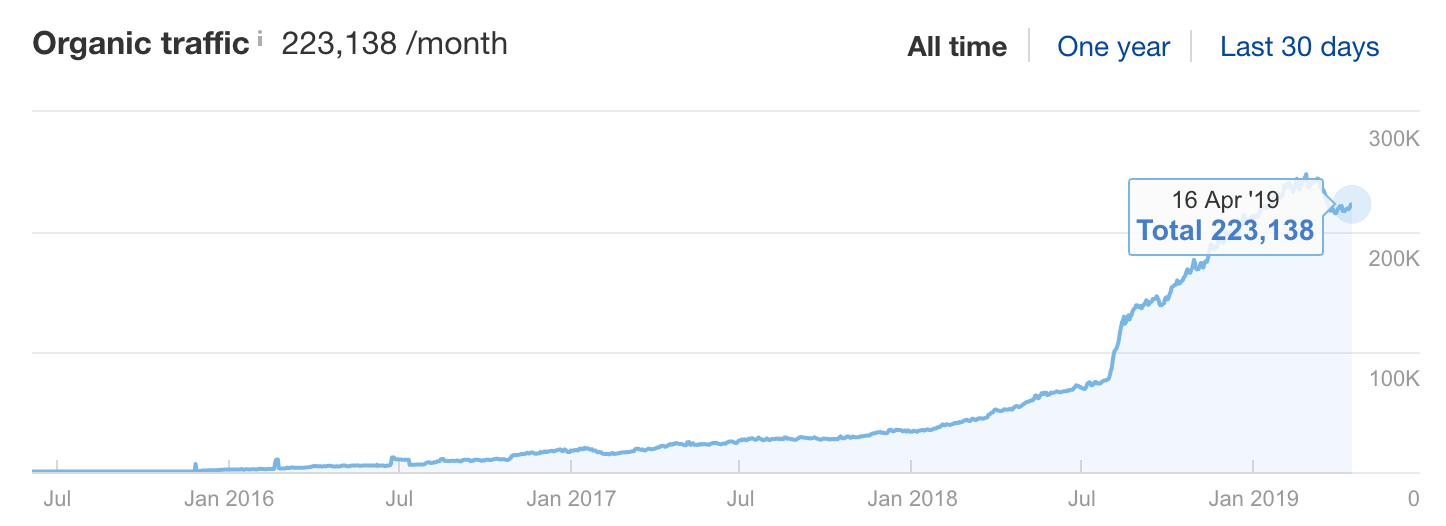Year after year, some companies put together content marketing strategies and swear that this will be the year they begin to see traction. Inevitably, after a few months, their efforts run out of steam.
Why?
Often, the cause is content burnout.
Burnout is more common than you think. According to the Content Marketing Institute, 63% of B2B marketers said their 2020 struggles were partly because of content creation challenges.
Content burnout is an important challenge for many reasons. It can stop teams from generating new leads and promoting their products, at which point they risk getting left out of the constant online conversation that many businesses need to participate in.
Fortunately, marketing teams can save themselves before it’s too late. Let’s break down what creation burnout is about and identify some of the top ways to guarantee at least a year’s worth of content.
Why Does Content Burnout Happen?
Before looking at addressing content burnout, it’s a good idea to consider why this happens in the first place.
Many business owners handle content creation themselves, taking whatever available time to write blog and social media posts—while attending to other demands of their organization. Content creation tends to go on the back burner, while the creator feels more and more overwhelmed, and eventually, burned out.
One guaranteed way to run out of momentum while creating content is by not setting goals. While experimentation is essential, content creation must be intentional. If businesses fail to outline what they hope to achieve with their content, they will try to do everything for everyone — and ultimately accomplish nothing for anyone.
Marketing teams must understand their brand and their audience to set effective targets. When developing goals, use the SMART method: make them specific, measurable, attainable, realistic, and timely.
Here are five ways to guarantee a year’s worth of content.
1. Think About Old Posts That Might Need Refreshing
Having up-to-date content on your website is critical for various reasons. It positions you as an authority in your field and increases trust with your audience. Combined with a strategic approach, it can also increase your search engine rankings.
In 2019, Ahrefs published an article showing the success they enjoyed through refreshing their content. Within a few years, a strategic approach to updating old blog posts helped their page views go from around 15,000 per month to over 220,000.
Image Source: Ahrefs
There are many easy ways to refresh old content:
- Check for broken or outdated links and replace them with current ones
- Search for outdated statistics and references to world events
- Add new images and graphics
- Refresh the language and ensure the tone matches the brand voice
2. Consider Holidays
Holidays are an easy source of writing prompts for blog and social media posts.
Know your audience. Readers may struggle with certain issues when a holiday comes around. For example, eCommerce businesses might need help reducing shopping cart abandonment rates before the Christmas season—and may wish to minimize returns afterward.
Ensure that the holidays you discuss are relevant to your audience—Australia Day will mean nothing to most customers in Italy.
3. Create a Calendar, but Be Flexible
Creating a content calendar is critical for any content marketing team looking to increase their effectiveness and improve their blogging results. Almost every brand winning with content marketing has one. However, it doesn’t pay to be too rigid.
Throughout the year, events will surface that force companies to think on the spot. And when these happen, it’s important to have some flexibility.
While it’s a good idea to have a decent amount of core content in the pipeline, teams will likely create more relevant content if they break things down and include trending topics. Consider using quarterly calendars that facilitate the staple articles and can incorporate any unpredictable events that might occur.
4. Outsource at Least Some of Your Content Marketing
The Achilles heel for many companies, especially smaller businesses, is that they feel like they need to do everything themselves. By doing this, however, they limit themselves in terms of their resources and expertise. The answer? Outsourcing.
Outsourcing is pretty common among B2B marketers. The Content Marketing Institute report cited earlier showed that 86% of businesses surveyed were outsourcing their content creation.
Outsourcing is an integral part of businesses’ content marketing strategies for numerous reasons. The first is access to expertise in delivering results, whether that’s increasing online visibility or generating more leads through their website.
Another benefit of outsourcing content marketing is that expert creators outside the workplace often have fresh insights and new ideas about how to generate interest.
5. Long-Term Success in Content Marketing Requires Fresh Thinking
Sometimes, we can’t see the forest through the trees, and the same goes for businesses and their marketing materials. Enjoying long-term content marketing success requires thinking carefully about your goals and preparing a strategy to meet them. Having a calendar is non-negotiable, and it must be flexible enough to react to any notable industry developments. Know your audience, know your brand, and don’t hesitate to reach out to experts who can help you achieve your vision.
By keeping these practices in mind, content marketers will ensure that they avoid content burnout and have enough blog content ideas to keep them going throughout the year.
With the DivvyHQ content marketing platform, teams can manage their content through automation, calendars, and more. Why not give it a free trial for 14 days?
If you found this article interesting, feel free to share it on social media and subscribe to the DivvyHQ blog for more.


